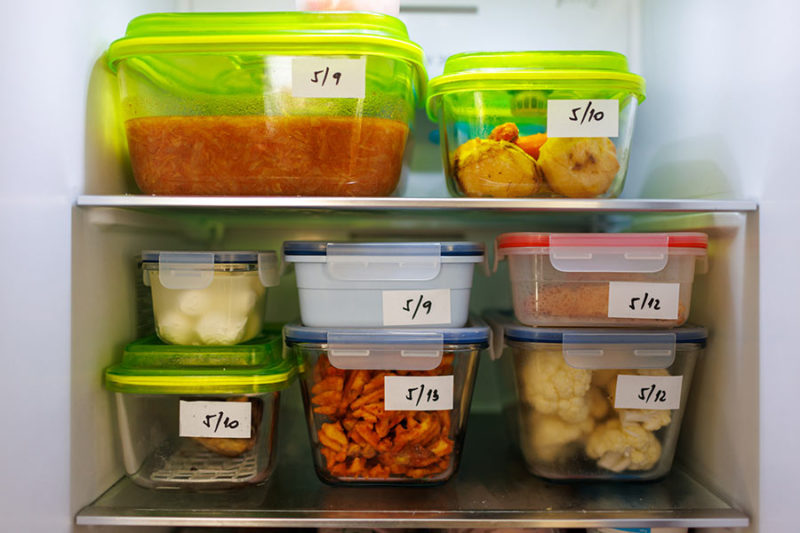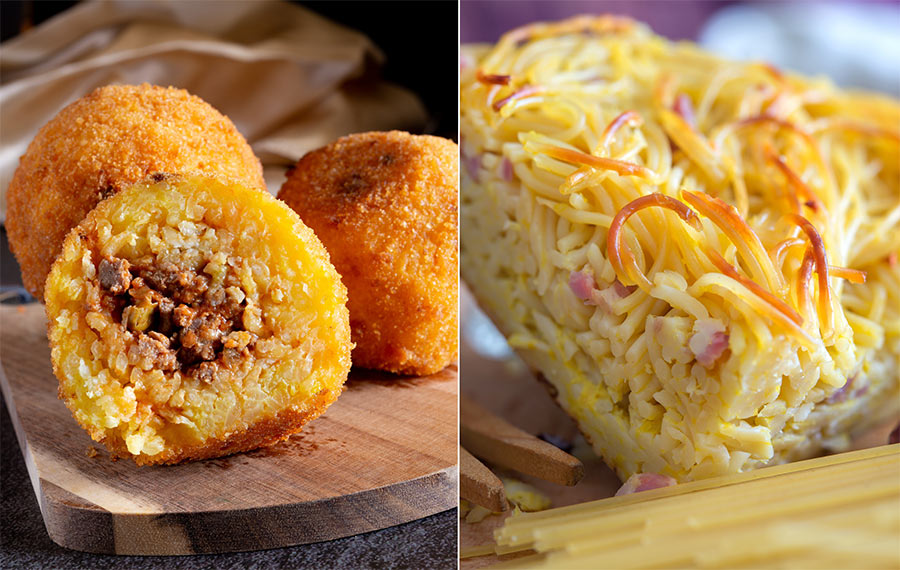In this edition of our bilingual feature, Tom Alberto Bull looks at how Italians are saving money by turning to old techniques for leftovers in the kitchen.

KEY WORDS
Useful Italian words and phrases to add to your vocabulary.
- Il aumento dei costi
Rising costs - Dove possibile
Where possible - I metodi tradizionali
Traditional methods - Il consumo del gas
Gas consumption - In modo simile
In similar fashion - Spegnere il gas
Turn off the gas - La generazione post-bellica
The post-war generation - La cucina del riciclo
Recycling cuisine - Il avanzo di cibo
Leftover food - Vantaggiosa per la tasca
Good for the pocket - Con l’aggiunta di
With the addition of - Le patate bollite
Boiled potatoes - Per saziare l’appetito
To sate the appetitie - Programmi televisivi
Television programmes - Godetevi i vostri avanzi!
Enjoy your leftovers!
ITALIANO | APPREZZATE GLI AVANZI!
Davanti all’aumento dei costi dell’energia e del cibo, tutti noi abbiamo dovuto pensare a modi per ridurre le nostre spese dove possibile.
In Italia la gente ha cominciato a ripensare a ciò che mangia, il che ha causato una rinascita dei metodi tradizionali di cottura e di piatti che erano stati inventati in tempi più poveri.
I contenitori per la cucina a basso consumo energetico sono un esempio di come ridurre il consumo del gas. Queste scatole sono imbottite di paglia o di lana e hanno una forma perfetta per coprire una pentola di metallo.
Si usa sempre il fornello per iniziare la cottura, ma quando il cibo ha raggiunto una temperatura molto alta lo si può trasferire nel contenitore dove lo si lascia per qualche ora – pensate ad una moderna pentola a cottura lenta senza la spina elettrica – e in questo modo si possono preparare vari piatti come gli spezzatini.
In modo simile, il fisico e vincitore del premio Nobel Professor Giorgio Parisi ha suscitato polemiche dopo aver consigliato un sistema alternativo per cucinare la pasta.
Che cosa ha suggerito? Mettere la pasta in acqua bollente e scaldarla per due minuti.
“Poi si può spegnere il gas, chiudere la pentola con un coperchio e calcolare un minuto in più rispetto al tempo di cottura indicato.”
Ma, come sempre, i tradizionalisti sono rimasti indifferenti, affermando che con questo metodo la pasta rimane gommosa e che non potrebbe mai essere servita nei ristoranti di alta qualità.
Gli italiani si sono ispirati anche alla creatività della generazione post-bellica per quanto riguarda la cosidetta ‘cucina del riciclo’: riutilizzare ogni avanzo di cibo, che sia pasta, riso, polenta, carne o pesce per creare piatti completamente nuovi.
Oltre ad andare sicuramente bene per l’ambiente, la cucina del riciclo può anche essere vantaggiosa per la tasca, tanto è vero che molti oramai cucinano appositamente quantità eccessive di cibo così da farlo durare per due pasti anziché uno solo.
Pertanto la pasta avanzata può diventare una frittata con l’aggiunta di uova e parmigiano; con il risotto avanzato si fanno dei timballi con ripieno di ragù, mozzarella o pesto creando gli arancini; la carne può essere tritata per fare delle polpette con pane e uova; le patate bollite si schiacciano e si mischiano con avanzi di formaggio, prosciutto e verdure per essere poi cotte di nuovo a gratin, alla napoletana.
Per saziare l’appetito sempre più forte del pubblico per questo tipo di cucina, sono apparsi vari blog, canali You-tube e programmi televisivi, mentre molti ristoranti hanno cominciato a offrire corsi di cucina per gruppi di cuochi entusiasti.
Questo approccio diventa sempre più diffuso anche nel Regno Unito. E allora, come fanno molti altri, godetevi i vostri avanzi! Buon appetito!

ENGLISH | LOVE YOUR LEFTOVERS!
Faced with rising energy costs and food inflation, we have all had to think of ways to save money where possible.
In Italy, people have begun to think about is what they eat. This has led to a resurgence of traditional cooking methods and dishes that were devised in poorer times.
Energy-saving cooking containers are one example of how to reduce the use of gas. These boxes are insulated with straw or wool and are shaped to perfectly cover a metal pot.
The stove is still used to start the cooking, but once the food is piping hot it can be placed in the container and sealed for a number of hours – think of a modern slow-cooker minus the plug socket – and can be used to produce a variety of dishes such as stews.
In similar fashion, the physicist and Nobel Prize winner Professor Giorgio Parisi caused controversy after putting forward an alternative way to cook pasta.
His suggestion? To add pasta to boiling water and heat for just two minutes.
“Then you can turn off the gas, put the lid on and calculate one minute longer than the indicated cooking time.”
But, as always, the traditionalists weren’t impressed, saying that it made the pasta rubbery and that it could never be served in high-quality restaurants.
Italians have also taken inspiration from the post-war generation’s inventiveness in what has been dubbed the ‘recycling cuisine’: re-utilising any leftover food, be it pasta, rice, polenta, meat or fish, to create entirely new dishes.
While cooking with leftovers is obviously good for the environment, it can also be good for the pocket, so much so that many people now deliberately cook food in excess of what they need and make it last for two meals rather than one.
Thus leftover pasta can be made into a pasta omelette with the addition of eggs and parmesan; excess risotto is shaped into balls, filled with ragù, mozzarella or pesto and turned into arancini; meat is minced and made into rissoles with bread and eggs; boiled potatoes are mashed then mixed with scraps of cheese, ham and vegetables and re-cooked au gratin, Neapolitan style.
To sate the public’s growing appetite for this type of cooking, food blogs, Youtube channels and television shows have sprung up, while many restaurants have begun offering cooking lessons to groups of enthusiastic cooks.
This practice is now becoming popular in the UK too. So like many others, enjoy your leftovers! Buon appetito!
Looking to learn more Italian? Discover more in our archive
Featured image © vgajic via Getty Images
